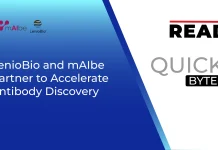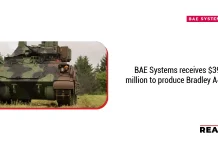Rockwell Automation has introduced its SecureOT solution suite, a comprehensive offering of solutions aimed at hardening industrial environments-from manufacturing facilities to critical infrastructure-against growing, sophisticated cyber threats that target Operational Technology systems. The new suite includes a SecureOT platform. It focuses on security, professional services, and round-the-clock support. It offers complete cybersecurity tailored for industrial operations.
As industrial operations grow more connected and automated, OT systems face more risks. These systems used to work alone and on-site. Now, they have new vulnerabilities. Traditional IT security tools often fail in complex, mixed, and old industrial networks.
SecureOT addresses this gap by providing:
OT-specific protection
Real-time visibility
Vulnerability management
Continuous threat monitoring
What SecureOT Provides
According to Rockwell, the key components of SecureOT include:
Secure OT Platform: Provides real-time visibility of assets. It helps prioritize risks and manage vulnerabilities in multi-vendor OT ecosystems.
Professional Services: Offers consulting, assessments, and support for better cybersecurity in organizations.
Managed Security Services: Provides 24/7 monitoring and incident response through Rockwell‘s dedicated OT SOC and NOC. This support helps organizations reduce risk without needing full in-house OT-security teams.
SecureOT meets key frameworks and regulations for industrial cyber-resilience. This includes NIST CSF, NIS2, and IEC 62443.
In summary, SecureOT protects industrial operations from advanced cyber threats. It helps organizations boost uptime, ease compliance, and handle risk during their operations.
Why This Matters for the Information Technology Industry
While SecureOT is positioned for industrial/OT environments, the importance of its launch extends well beyond to the entire Information Technology sector, especially in the realm where IT and OT continue to converge.
1. Increasing Demand for IT/OT Convergence Solutions
The digitization of industrial facilities with the increasing adoption of IoT, automation, cloud-connected monitoring, and analytics is increasingly blurring the boundary between traditional IT and OT. This also means that IT-security vendors, MSPs, cloud-service providers, and IT consultants should be evolving to meet the challenges of OT. With the emergence of SecureOT, it is crystal clear that OT security now needs to be considered at the core of service and product strategy by each IT firm.
2. Expansion of Managed Security & Compliance Services
SecureOT fuses MDR with OT-specific knowledge, a combination rarely encountered in traditional IT-security services. For IT companies already active in enterprise security, this means opportunity: expansion into OT-security services, compliance consulting on matters like NIS2 and IEC 62443, and managed SOC/NOC services for industrial customers.
Also Read: ROHM Introduces Wide-SOA Power MOSFET for AI
3. Demand for Cross-Domain Expertise & New Skills
Protecting OT-especially legacy, heterogeneous systems-requires a different skill set than conventional IT. Understanding ICS, real-time constraints, safety implications, and regulatory compliance is crucial. This will increase the need for professionals with hybrid skills in IT, OT, cybersecurity, and compliance. The IT firms will have to increase their recruitment or training to meet this demand.
4. Opportunity for Software & Platform Providers
SecureOT’s platform provides visibility, risk management, and monitoring for various device ecosystems. This drives demand for software vendors that can integrate with both IT and OT infrastructures. Firms that create cybersecurity platforms, asset management tools, patch management suites, or compliance automation software might see a new market forming.
5. Greater Focus on Resilience and Compliance
Global rules like NIS2 and IEC 62443 are tightening. So, businesses need to adopt strong security and compliance solutions. IT companies that offer compliance management tools, auditing, monitoring, and reporting will see higher demand. Industrial firms are updating their OT networks with security controls.
Business Impacts and Strategic Implications
Manufacturers and Critical Infrastructure Operators: Companies that run factories, utilities, or infrastructure will likely increase their cybersecurity for operational technology (OT). This change can result in lasting investments in managed security services, ongoing monitoring, and compliance solutions.
IT Security Vendors & MSPs: Firms can boost their services by adding OT-security features. These include asset visibility, vulnerability management, and SOC/NOC monitoring. This helps industrial clients move from legacy OT to modern, connected operations.
Consulting & Compliance Firms: New regulations like NIS2/EU and IEC 62443 will boost demand for consulting firms. These firms will focus on OT-security audits, assessments, remediation planning, and compliance readiness.
Talent Market & Workforce Development: The need for IT cybersecurity and industrial control systems experts is rising. This shift may alter worker training, hiring practices, and skill development.
Software and Platform Providers: Vendors selling hybrid IT/OT tools—such as asset discovery, vulnerability scanning, patch management, and SOC orchestration—will find a welcoming market. This is especially true for mid to large-scale industrial customers.
Challenges & Risks
Many industrial systems are old and varied. They require constant uptime. Securing them without disrupting operations requires careful planning and deep knowledge.
Skill Gap and Training Need: IT security staff often lack knowledge of OT protocols, control systems, and safety-critical operations. Filling this gap will be challenging.
Costs & ROI Justification: Most industrial firms have to be convinced that cybersecurity investments will pay off and be justifiable in costs, especially when operations are tight on margins or resources.
Legacy System Integration: In-depth testing and validation will be necessary to ensure that SecureOT or other IT-driven security tools can integrate safely with legacy OT systems to avoid causing any sort of downtime.
Conclusion
This is a pivotal moment in the evolution of cybersecurity, as Rockwell Automation introduces SecureOT to a world in which the themes of industrial resilience, safety, and operational continuity are inextricably linked with robust cyber defenses. For the wider IT industry, it underlines a growing opportunity: one in which, with IT and OT converging, hybrid solutions will be in demand, as will managed services, compliance expertise, and new software platforms created for industrial use cases.
In the coming years, many IT companies may dive into OT security. We could see more partnerships between traditional IT vendors and industrial automation firms. Also, there will be a growth in hybrid-skill cybersecurity professionals. Companies that quickly adopt OT security, build skills, or offer integrated services will be in a strong position. They can lead in a new era where cyber resilience supports digital transformation and physical operations.




